- News
- Reviews
- Bikes
- Components
- Bar tape & grips
- Bottom brackets
- Brake & gear cables
- Brake & STI levers
- Brake pads & spares
- Brakes
- Cassettes & freewheels
- Chains
- Chainsets & chainrings
- Derailleurs - front
- Derailleurs - rear
- Forks
- Gear levers & shifters
- Groupsets
- Handlebars & extensions
- Headsets
- Hubs
- Inner tubes
- Pedals
- Quick releases & skewers
- Saddles
- Seatposts
- Stems
- Wheels
- Tyres
- Tubeless valves
- Accessories
- Accessories - misc
- Computer mounts
- Bags
- Bar ends
- Bike bags & cases
- Bottle cages
- Bottles
- Cameras
- Car racks
- Child seats
- Computers
- Glasses
- GPS units
- Helmets
- Lights - front
- Lights - rear
- Lights - sets
- Locks
- Mirrors
- Mudguards
- Racks
- Pumps & CO2 inflators
- Puncture kits
- Reflectives
- Smart watches
- Stands and racks
- Trailers
- Clothing
- Health, fitness and nutrition
- Tools and workshop
- Miscellaneous
- Buyers Guides
- Features
- Forum
- Recommends
- Podcast
review
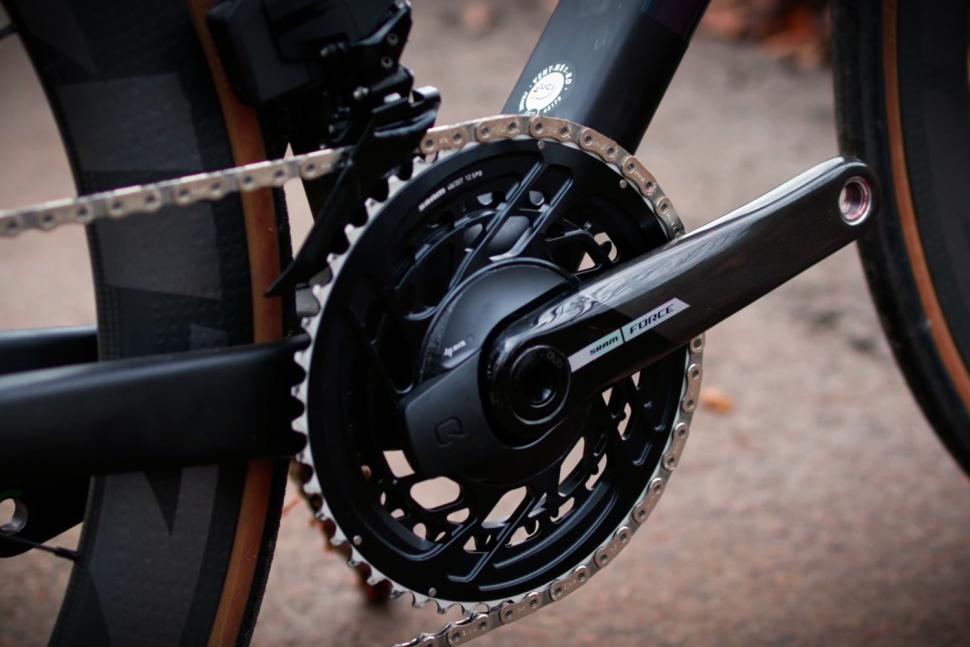 2023 Sram Force AXS lead image
2023 Sram Force AXS lead image£2,290.00
VERDICT:
Like the old Force AXS but lighter, more comfortable and better looking
Front shifting improved
Easy to use in all conditions
Hood shape much more ergonomic
Reliable and faultless performance
Quarq power meter is a gem
Integrated power meter doesn't feel like progress
Still heavier than Shimano Ultegra
Weight:
2,896g
Contact:
At road.cc every product is thoroughly tested for as long as it takes to get a proper insight into how well it works. Our reviewers are experienced cyclists that we trust to be objective. While we strive to ensure that opinions expressed are backed up by facts, reviews are by their nature an informed opinion, not a definitive verdict. We don't intentionally try to break anything (except locks) but we do try to look for weak points in any design. The overall score is not just an average of the other scores: it reflects both a product's function and value – with value determined by how a product compares with items of similar spec, quality, and price.
What the road.cc scores meanGood scores are more common than bad, because fortunately good products are more common than bad.
- Exceptional
- Excellent
- Very Good
- Good
- Quite good
- Average
- Not so good
- Poor
- Bad
- Appalling
The SRAM Force AXS groupset remains the brand's second-tier option, but this latest version has been updated with less bulky shifters, a SRAM Red-style carbon crankset, a new front mech design, a new look and a slightly lower weight. It's better than ever and remains an excellent choice for workhorse bikes all the way through to dream builds both on the road and gravel.
> Buy now: SRAM Force AXS for £1,999 from Certini
The old SRAM Force AXS earned many fans during its four-year lifespan – we gave the 'Wide' version a 9/10 rating in fact – but it wasn't without its faults. Personally, I found the shifter hoods too large, there was well-documented dissent around the front shifting performance (although a lot of this could have been down to its need for precise setup) and by last year the aesthetics were getting a bit dated.
What’s new?
Although this second-generation Force AXS is undoubtedly an evolution rather than a revolution, it has managed to address all of these issues. Here's a brief overview of what's changed:
- eTap bit of the name has been ditched
- Shifter hoods are much smaller (following the Rival AXS shape)
- Shifter paddles are larger
- Around 100g lighter than outgoing version
- Front mech has new cage shape (it's also black)
- Double chainring chainset now has integrated rings and power meter
- New colour scheme of 'unicorn grey' and laser foil detailing
Ergonomics
One of the most noticeable changes – and in my opinion the most welcome – is the revised hood shape. The old Force not only compromised the look of a bike in a way only hydro-mechanical shifters do, but also gave me blisters on long off-road rides.
To slim them down, SRAM has chucked the rarely used pad contact point adjustment in the bin and lifted the hood shape directly from the lower tier Rival groupset. This might sound like a downgrade but the Rival shifters have the most recent design architecture and were well received, so in my opinion it's a welcome change.
I'm not the only one either – Danish pro Jonas Vingegaard clearly prefers this shape too, opting to use the new Force shifters (below left) on his SRAM Red groupset.
Riders with smaller hands will likely prefer the redesigned shifters even more than I do. It's much easier to wrap your hands around the shifter body, which helps you feel as secure as possible; this is great on the road but even more useful on the 1x version that I used off-road.
The redesign of the shifters has brought them in line with other disc brake electronic groupsets, and despite the smaller hoods I never felt as if my hands were going to slip forward when barrelling down descents.
Even on long rides, the new shifters are a comfy place to be, but even so I do tend to take easy climbs as an opportunity to change my hand position and use the tops of the bar. Cue SRAM's next creation: wireless climbing blips... These attach using some 3M double-sided tape, so you can put them wherever you see fit – you could even use them as sprint shifters on the drops if you wanted.
The old Red groupset used wired blips, so it's nice to see SRAM ditching even more wires because this really does make bikes super easy to build and service. This has added benefit if you wanted to fit the groupset to a TT bike, for example.
Shifting
Staying up top with the shifters, you'll also notice that the shifting paddles (the bits you press to change gear) have also changed. They're now slightly larger and more textured, reducing the chances of missing the button (although in my opinion, SRAM AXS levers were already winning the way in this regard).
Just like on previous eTap groupsets, the button on the right shifter drops the chain down the cassette while the button on the left makes it climb back up. To change between chainrings you press both buttons together.
Using the groupset over the winter, many of my rides have been in gloves, sometimes very thick winter ones, and the shifter paddles on the latest Force are still easy to find. This is a clear advantage over Shimano's offerings: because there's only one paddle per shifter there's no chance of accidentally clicking the wrong one, even in thick gloves.
The paddle click is tactile and responsive and requires enough force that you know you've definitely pressed it, although it does feel a little bit more utilitarian/plasticky than the more expensive Campagnolo WRL groupset I've also been using.
The shifting itself is no great surprise, and other than taking the launch as an opportunity to streamline its naming and range, the rear mech remains largely unchanged.
There are now just two rear mechs: the road version, which is suitable for the 10-28T, 10-30T, 10-33T and 10-36T cassettes, and the gravel-focused 1x-specific Force XPLR AXS rear derailleur, which works with 10-36T and 10-44T cassettes. You can even fit one of SRAM's Eagle mountain bike rear mechs in a mullet setup if you require even more range.
The Force rear mech is one of the areas where you get an upgrade other than weight over the lower-tier Rival groupset. Whereas the Rival rear mech uses a spring clutch system, the Force and Red rear mechs use an Orbit fluid damper to keep the chain under control, just like on the old Force. I found this worked well however many potholes I chucked it through.
I also used a new Force rear mech on a 1x gravel setup and during one race I was suitably impressed as I pedalled out the bottom of a rocky gulley, while two Shimano GRX riders were at the side of the track reacquainting their chains and chainrings.
The rear shifting is crisp and reliable, and SRAM also allows you to grab multiple gears at once by holding down the shifter paddle which means you can quickly jump up and down the cassette with ease. The mech copes well with the bigger jumps towards the top of the cassette, although I still don't think the shifting is quite as quick as Shimano's (which I have set to the fastest setting). That said, it is plenty fast enough and never left me wanting.
It's the front shifting that SRAM desperately needs to get right, though, as, perhaps slightly unfairly, it's managed to garner a reputation for being less than perfect in this area. In my opinion, the early Shimano Di2 groupsets were superior to SRAM's chainring shifting, but it was the later generation's limited operating window that cemented it. By this, I mean that if your Shimano front mech was set up slightly wrong then it would likely still function as intended, whereas the SRAM equipment required perfect setup to avoid tears.
To try to counteract this SRAM has made some key changes. Firstly, the chainrings are now direct mount rather than requiring a spider, which is said to increase stiffness, and secondly, the front mech cage shape has been revised.
The result is undoubtedly an improvement. I've been giving the new groupset very little mechanical sympathy on my rides and have been impressed with its ability to change under load. I've even removed the front mech and readjusted it to ensure I hadn't just got lucky the first time. Could this be the end of SRAM's front-shifting woes? It certainly looks like a big step in the right direction.
There are two more parts required for smooth shifting, the cassette and the chain. The chain is still a flat top affair but is now available in a rainbow colour scheme (shown below), and the cassettes themselves also haven't changed – not since SRAM scrapped trying to paint them black anyway.
Chainset and power meter
SRAM offers a whole bunch of different Force cranksets, with the big change being the use of integrated chainrings on the standard 2x chainset, which essentially means that the two chainrings are a one-piece construction which is said to be lighter and stiffer. Force still gets carbon cranks, unlike the lower-tier Rival and Apex AXS groupsets.
SRAM has also added a 50/37-tooth option, which was previously available only at Red level, along with the 48/35T that we've been using and 46/33T. There is also a 43/30T Wide version available with a longer-than-normal spindle for both road and mountain bike bottom bracket standards, but this one has non-integrated chainrings.
In my first ride review of SRAM Force, I discussed the downside of integrated chainrings – essentially, the cost of replacement when they wear out. You're looking at £236 for a replacement Force 2x Chainring kit as you can't simply replace one of the rings, and things get far worse if you go for a power meter option (£772) as this, too, is integrated into the rings.
After several months of testing, my opinion still hasn't been swayed: I think the performance is great but it just doesn't seem very environmentally or financially conscious to be integrating what is essentially a service part that will need replacing during the lifetime of my bicycle. SRAM argues that with proper cleaning a chainset will last, and to back this up I have got two years (15,000 miles) out of my SRAM Red crankset. It's not the cost or the lifespan that are huge negatives, but having a consumable part integrating a power meter doesn't feel like a step forwards; it means it's more important you stay on top of your cleaning with this groupset than any other.
On a more positive note, the integrated Quarq power meter has been absolutely faultless. It's impressively accurate (+/-1.5%), you get left/right power balance, and it's been reliable. Over the years I've continually been impressed by Quarq's products, and this Force AXS power meter lives up to that expectation and rivals far more expensive devices.
Gear range
I've already discussed some of the gearing options, and the majority of my testing was done on a bike (below) with 48/35T chainrings and 10-33T cassette. This might sound small for a performance road bike but actually offers a similar ratio to a 53x11, but with far more opportunity to spin as the road starts going up than on a classic full-size chainset.
I'm sure there will be plenty of people arguing that the old way is better, and there are situations where this is true. Ironically, it's racers who have more to complain about – the smaller chainrings and wider range cassettes make a lot of sense for those of us who don't average 45kph on our rides.
Many a naysayer will argue that smaller rings are less efficient, and they'd be right, but with the X-Range – which is what SRAM calls this idea of smaller rings at the front, more range at the back – you can stay in the big ring for longer, especially on rolling terrain like we've got here around the city of Bath. It also means that, more often than not, my chain line has improved as well, which should benefit drivetrain durability.
Others may worry about how quickly the 10T sprocket will wear out and I agree it will likely wear out quicker than an 11T. I have never worn out an 11T, though, and highly doubt I'll see a 10T wear out before the rest of the much more regularly used gears; if I do then I'm probably using the wrong size chainrings.
In my opinion, SRAM offers amateur riders more appropriate gearing options than anyone else, and this Force groupset is leading the way by now including the 50/37T chainset as well as those tailored towards gravel use.
Batteries
Being completely wireless, each component of the AXS groupset requires its own power source. Power is taken care of by a coin battery in each shifter, while both the front and rear mechs get their own rechargeable battery pack.
The lack of wires makes setting up a SRAM AXS groupset very easy compared with others, and SRAM has also gone to a lot of effort with its tutorial videos to enable as many people as possible to work on their new groupset at home.
The batteries remain unchanged; they're interchangeable between the front and rear mechs, if you are running both, which has got me out of trouble on more than one occasion – although the blinking red lights should have been a giveaway that they needed charging.
The batteries have a claimed run-time of 60 riding hours and in my experience that hasn't been at all far off. They take around an hour to charge back up to full, although do require a proprietary charger (included).
I usually get the best part of a year out of the shifter batteries (CR2032s) and these aren't too much hassle to change. You can check their charge using the AXS phone app.
Braking
I've kind of glanced over the callipers, simply because nothing here has changed from the outgoing generation. The callipers do use bleeding edge technology, which I mention only because it's something that the Rival callipers are missing. For those of you who don't know, bleeding edge is a superb method of bleeding your brakes, aka getting air out of the system, but it does require a special kit.
Rest assured that the brakes still provide plenty of power, modulation and feel, and I've never found SRAM brakes to have any clearance issues like the Shimano brakes of old, where they would rub a lot after prolonged braking.
Weight
The result of this nipping and tucking is a groupset that's lost weight, somewhere between 94-104g depending on the exact setup you're running. SRAM says that a 2x Force AXS groupset, including a power meter, like we have here, weighs 2,896g whereas the older generation was 2,990g.
That puts a little more distance between it and the lower-tier SRAM Rival AXS 2x system which weighs about 3,097g, although you'll be hard-pressed to notice this 200g weight saving out in the real world. SRAM Red AXS remains by far the lightest groupset in SRAM's arsenal, with a weight of 2,518g.
Compared with Shimano's offerings, the latest SRAM Force AXS is still a little rotund, 12-speed Shimano Ultegra R8170 having a claimed weight of 2,716g. In fact, the lower-tier 105 R7100 groupset (2,992g) comes in at only a little bit more than SRAM's second in command.
The new SRAM Force still isn't one for the weight-weenies then, but you can happily build up a Force AXS-equipped bike under the UCI weight limit if you so wish.
Value
Perhaps the most surprising feature of the new Force is that it costs exactly the same as the generation it replaces. Complete SRAM Force AXS groupset prices start at £1,533 and go up to £2,290; the one I've done the majority of my testing on, a 2x road groupset with a power meter, comes in right at the very top of that range.
As hardly anyone EVER buys a groupset at full price, that sounds like a huge sum of money, so here's some context: Shimano 105 R7100 costs £1,730, Shimano Ultegra R8170 costs £2,399, SRAM Rival AXS is £1,730 and SRAM Red AXS £3,545.
Yeah, okay, it's still a huge sum of money, but Force AXS is about where you'd expect, and most importantly still undercuts Shimano's Ultegra. Furthermore, you also get that excellent Quarq power meter included in the price, whereas with Shimano if you have one on your wishlist then you're looking at an additional £300 or more.
Conclusion
I would undoubtedly have chosen Ultegra R8170 over the previous generation of SRAM Force, but this latest groupset takes the fight straight to Shimano in terms of ergonomics, shifting performance and, in my opinion, aesthetics.
Test riding the multiple bikes we've had equipped with Force AXS, the groupset hasn't skipped a beat; it's survived the flooded roads of Somerset during one of the wettest winters on record, it's kept my hands comfy on long days in the saddle, and there's more than enough gearing options to conquer even the most hideous of climbs.
The second generation of Force AXS feels like the culmination of all the good bits of what SRAM's done recently, almost like the greatest hits album of AXS so far: the Rival-esque shifters, the SRAM Red-style chainset, interchangeable batteries, and one groupset for both road and gravel. The result is an accomplished groupset that's comfortable, functional, durable and easy to live with.
Would I choose it over Ultegra? For gravel, yes, undoubtedly, though I would still be tempted by the lighter (but more expensive) Ultegra on my road bike, as good as the new Force is. Alternatively, if you're trying to go as light as possible then you'd be silly to not grab one of the humungous discounts on the current SRAM Red...
Verdict
Like the old Force AXS but lighter, more comfortable and better looking
road.cc test report
Make and model: SRAM Force AXS groupset
Size tested: 2x Disc with Power Meter
Tell us what the product is for and who it's aimed at. What do the manufacturers say about it? How does that compare to your own feelings about it?
SRAM says: "The Force AXS road collection is riding at its finest. With its one-piece 2x front chainrings and a new front derailleur cage design, Force brings a new level of precision to front shifts. Add to that sophisticated carbon finishes and refined shift/brake ergonomics, and it's no wonder Force is at home on the world's most inspiring bikes, out there on the world's most epic roads."
I agree that it's a great groupset and appeals to both road and gravel riders looking for a high-spec electronic groupset.
Tell us some more about the technical aspects of the product?
From SRAM:
In the Box:
1 x SRAM Force D2 eTap AXS complete front brake/shifter lever with flat mount caliper
1 x SRAM Force D2 eTap AXS complete rear brake/shifter lever with flat mount caliper
2 x SRAM Centerline XR disc rotors 160mm, Centrelock brake rotor mount
1 x SRAM Force D2 eTap Rear Derailleur, Max 36t
1 x SRAM Force D2 etap Front Derallieur, Braze-on
2 x SRAM eTap battery
1 x SRAM Charger and Cord
1 x SRAM Force 1270 Cassette 10-33t
1 x SRAM Force 12 Speed Flattop Chain
1 x SRAM Force D2 2x Dub Chainset
The most precise Force AXS is here.
Choose from integrated power solutions for road and gravel. Accelerate with intelligent gear ranges. Drop mass with redesigned hood shapes that fit a wider range of hand sizes, and enjoy the consistent curve of hydraulic stopping power. Personalise it with AXS. It's a departure from everything you thought you knew about the equation of Force.
Force AXS HRD Shift-Brake System - eTap Brake/Shift Lever (Left/Right) and HRD Brake Caliper Flat Mount (front/rear)
Small changes can make a big difference. SRAM optimised the Force AXS hood shape to provide increased finger wrap for more hand sizes, so you can stay secure sprinting for town lines, committing to the rut in a muddy CX race, or chattering down a long gravel descent. What hasn't changed is the power and modulation of SRAM's acclaimed hydraulic disc brakes. Intuitive shift logic and easy-to-find shift paddles mean these controls really do perform.
Force Crankset X-Range DUB 2x12-Speed
The crank is the very centre of SRAM's X-Range gearing philosophy. With tight 13-tooth gaps between chainrings paired to wide-range cassettes, riders get more range while shifting less frequently and staying in the big ring longer. Previously only available on RED, the integrated chainrings are light, stiff, and incredibly durable. The black finish mated to dazzling glossy carbon arms will elevate any bike.
Force AXS Front Derailleur
Lightning-fast and reliable shifts, every time. The Force AXS front derailleur uses everything SRAM know about shifting to provide precision when you're switching rings. It's optimised for the 13-tooth gap between X-Range rings, and Yaw technology ensures trim is a thing of the past.
Force AXS Rear Derailleur
Road racing. CX. Gravel. Coffee rides. This derailleur truly does it all and looks good doing it. The single cage length works with any cassette size from 10-28T to 10-36T, in 1x or 2x configurations. Shifts are fast and precise, and the Orbit fluid damper keeps the chain in control, whether the obstacle you're hitting is a pothole or a root. The graphics pop just the right amount, to remind you that you have the coolest fully wireless drivetrain out there.
Force XG-1270 Cassette
Designed for the next generation of drivetrains and the next generation of riders. The SRAM Force XG-1270 cassette is optimised for electronic shifting and features SRAM's X-Range gearing technology. Smooth, precise shifts, from 10T on up.
Force Chain - Flattop including Powerlink Chain Connector
Beyond an incremental improvement. The Flattop technology of the SRAM Force chain creates a lighter, quieter, stronger chain. Ride far, long and fast-this chain can go the distance.
Battery
The SRAM battery is the power source for eTap® or AXS™ components. The same power unit is interchangeable between front and rear eTap® AXS™ derailleurs, Eagle AXS™ derailleurs, and the RockShox Reverb AXS™ seatpost.
Battery Charger
SRAM batteries are literally a snap to remove and charge. Just flip the tool-free battery latch up and slide the battery up and out of the derailleur. Then snap the battery into the USB powered charger and connect the charger to any USB power source or A/C USB adaptor. A full charge takes up to 60 minutes to complete.
SRAM Centreline X Road 2 Piece Centerlock Rounded 160mm Rotor
It's designed specifically for road riding and to keep braking quiet at every stop. Streamlined form optimised for road use, CenterLine track offers quiet brake operation, and the two-piece design reduces weight.
Rate the product for quality of construction:
9/10
Rate the product for performance:
9/10
Rate the product for durability:
9/10
No issues after several months of testing on both the road and gravel.
Rate the product for weight (if applicable)
7/10
Rate the product for comfort (if applicable)
9/10
The new shifter shape is a big improvement; gear changes and braking can be achieved with minimal effort.
Rate the product for value:
5/10
It's not bad value, on a par with Shimano Ultegra R8170 in fact, but the Apex AXS and Rival AXS groupsets undoubtedly offer better value for money for anyone other than weight-weenies.
Tell us how the product performed overall when used for its designed purpose
Precise shifting across the entire range and it runs smoothly too. Great choice of ratios for all amateur cyclists.
Tell us what you particularly liked about the product
I like the new look but that's pretty subjective.
Tell us what you particularly disliked about the product
The integrated power meter doesn't feel like progress to me.
How does the price compare to that of similar products in the market, including ones recently tested on road.cc?
Shimano Ultegra R8170 is the clear rival for the new Force AXS; SRAM is around £100 less and includes a power meter but it is slightly heavier and shifts are slightly slower so I'd say they're on a par. Both are brilliant groupsets and which one is best for you will come down to what deals are available on the day and personal preference.
Did you enjoy using the product? Yes
Would you consider buying the product? Yes
Would you recommend the product to a friend? Yes
Use this box to explain your overall score
It's not just a cheaper or heavier SRAM Red but rather an absolutely cracking groupset in its own right. The shifting and braking are excellent and each of the previous generations' weaknesses have been addressed to make it a true rival to Shimano Ultegra. To get the full five stars it would need to be a few hundred grams lighter and I'm still not convinced that an integrated power meter is the future.
About the tester
Age: 23
I usually ride: Specialized venge pro 2019 My best bike is:
I've been riding for: Under 5 years I ride: Every day I would class myself as: Expert
I regularly do the following types of riding: road racing, time trialling, cyclo cross, commuting, club rides, sportives, general fitness riding, mtb,
Jamie has been riding bikes since a tender age but really caught the bug for racing and reviewing whilst studying towards a master's in Mechanical engineering at Swansea University. Having graduated, he decided he really quite liked working with bikes and is now a full-time addition to the road.cc team. When not writing about tech news or working on the Youtube channel, you can still find him racing local crits trying to cling on to his cat 2 licence...and missing every break going...
Latest Comments
- CmdrBiggles 0 sec ago
Nice they are out of the box (28-622) and easy to fit, but my first puncture, in the centreline of the tread, occurred at 133km, and it was none of...
- Steve K 31 min 41 sec ago
There is still an advert free version on the app - you just need to make sure you click on the right feed (which will be the one with out a channel...
- kcr 4 hours 42 min ago
I think Livingston (no "e") has the best cycling infrastructure I have seen in Scotland. It has an extensive network of paths that are actually...
- kcr 5 hours 22 min ago
I'd say it is an extremely rare condition for most cyclists or runners.
- ErnieC 8 hours 7 min ago
or Team Bahrain ... selective outrage.
- newbankgyratory 9 hours 10 min ago
This website offers suitable data: https://www.automobiledimension.com/large-suv-4x4-cars.php
- newbankgyratory 9 hours 43 min ago
Perhaps park the goods in a US Customs Bonded warehouse and then import them out of there when the tariff nonsense settles down?...
- Dnnnnnn 7 hours 38 min ago
Good to see a road.cc review of what must be one of the UK's best-selling 'proper' road bikes....
- Miller 11 hours 56 min ago
Nice to see WvA featuring in the finale.
- Miller 11 hours 59 min ago
I have known more than one elder statesman of the club die of a heart failure while out on a ride. Sometimes I feel that's about to happen to me,...




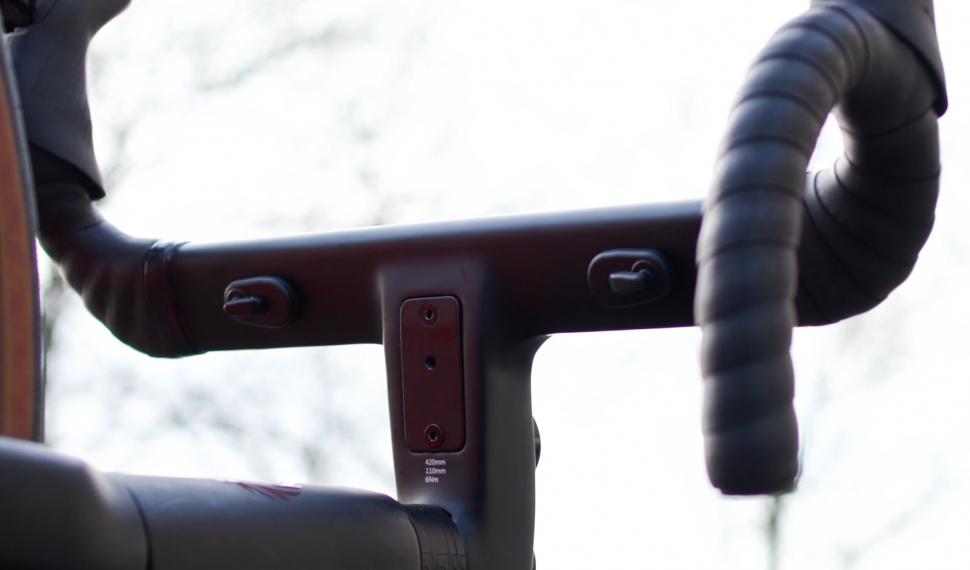
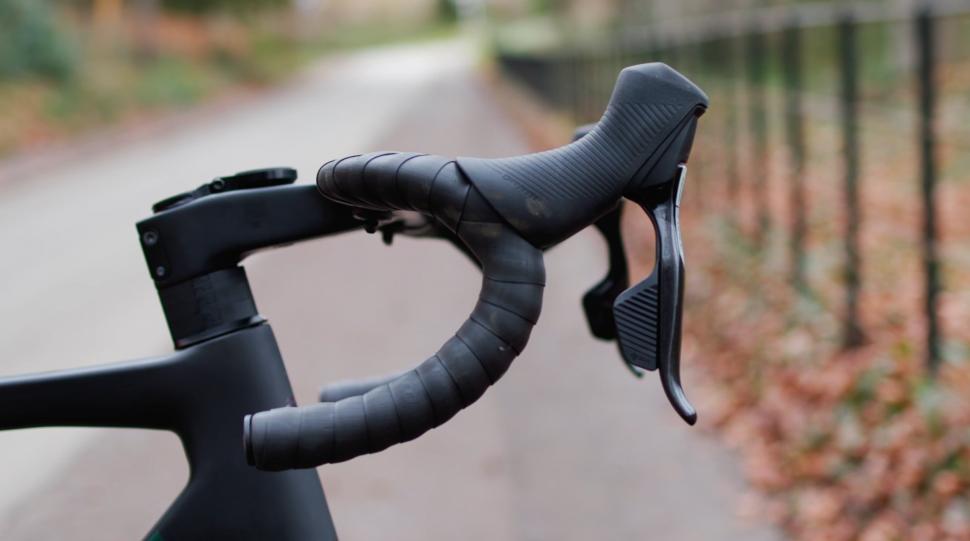
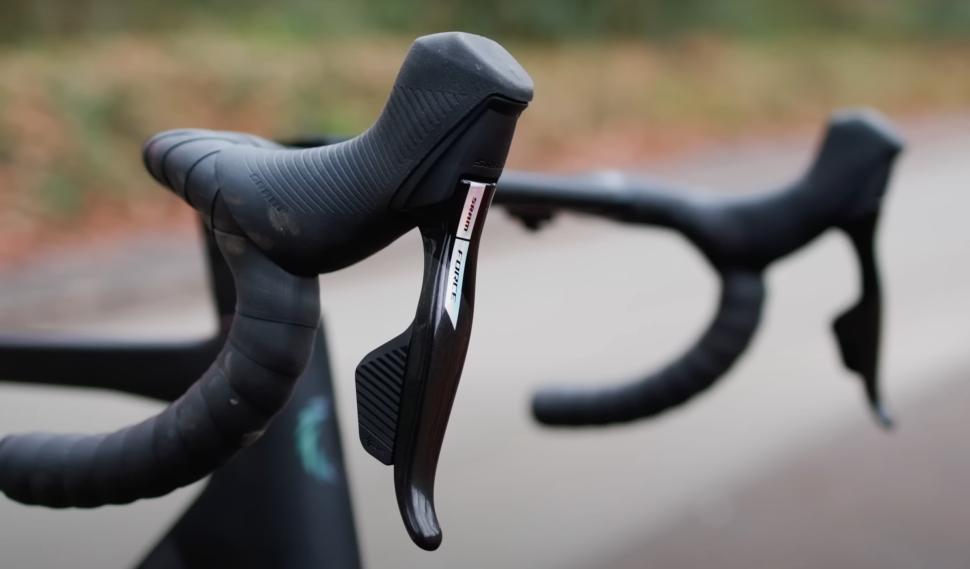
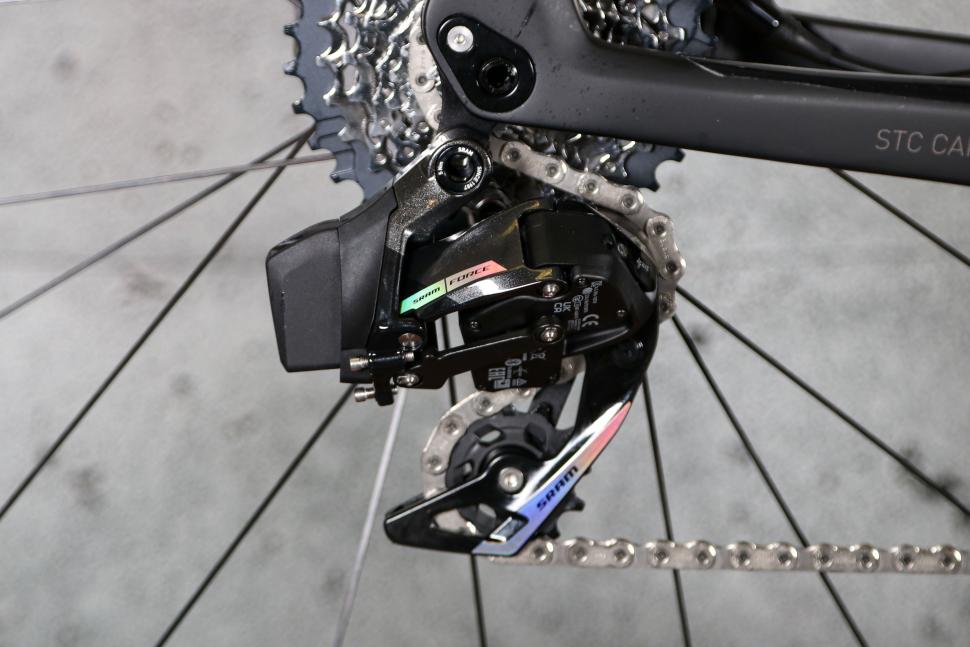

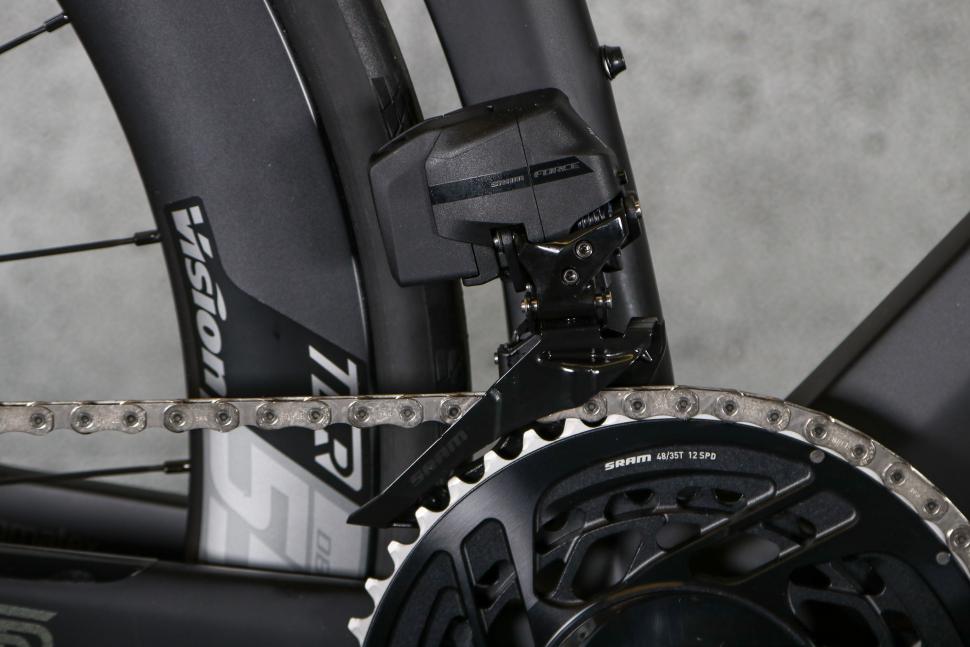
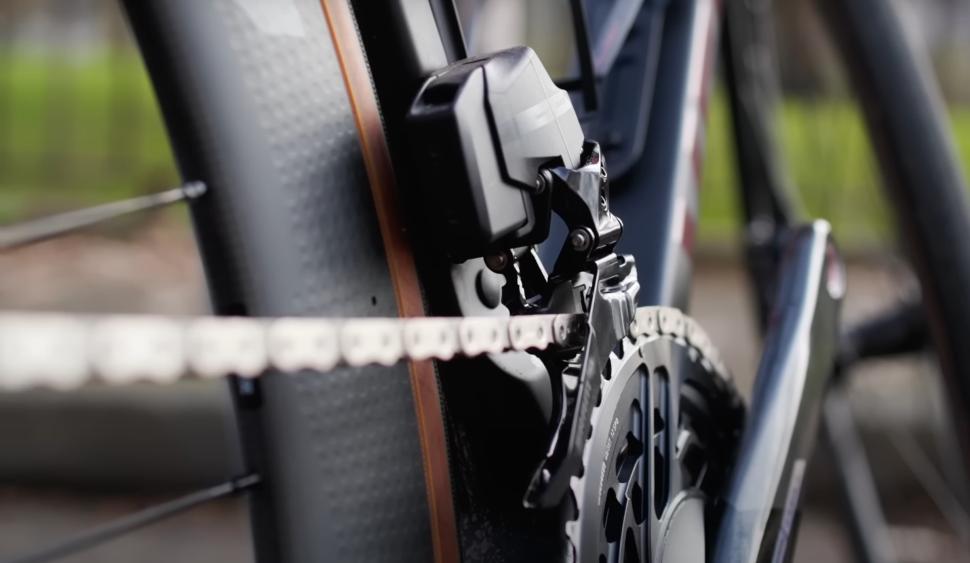
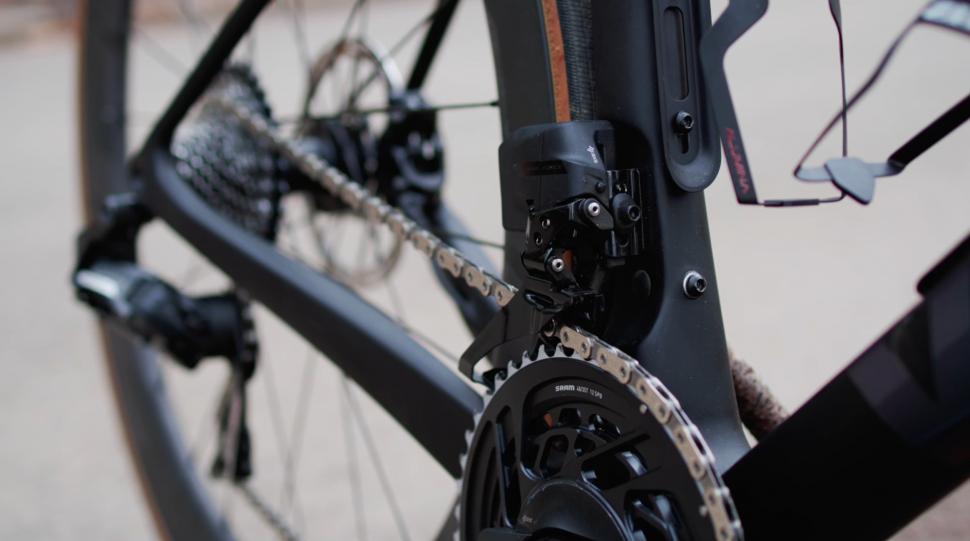

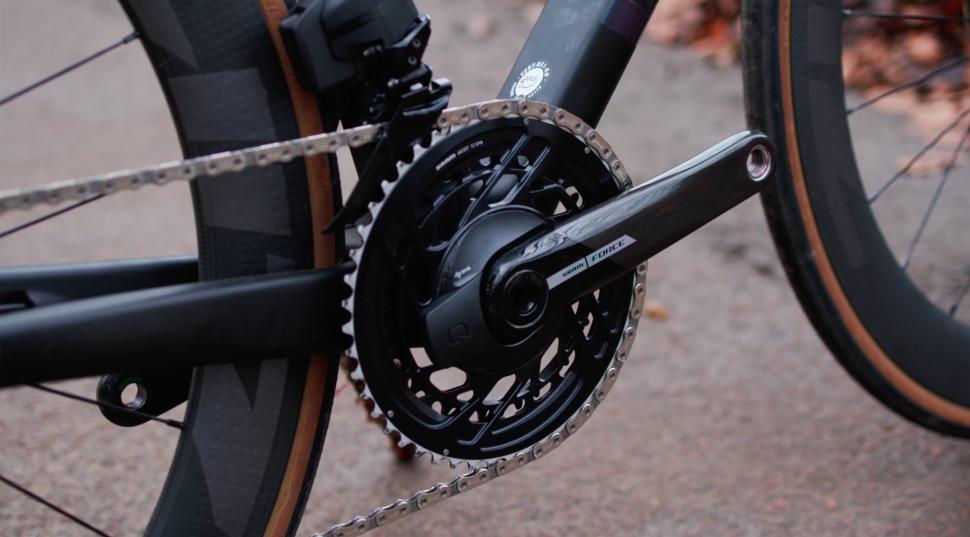
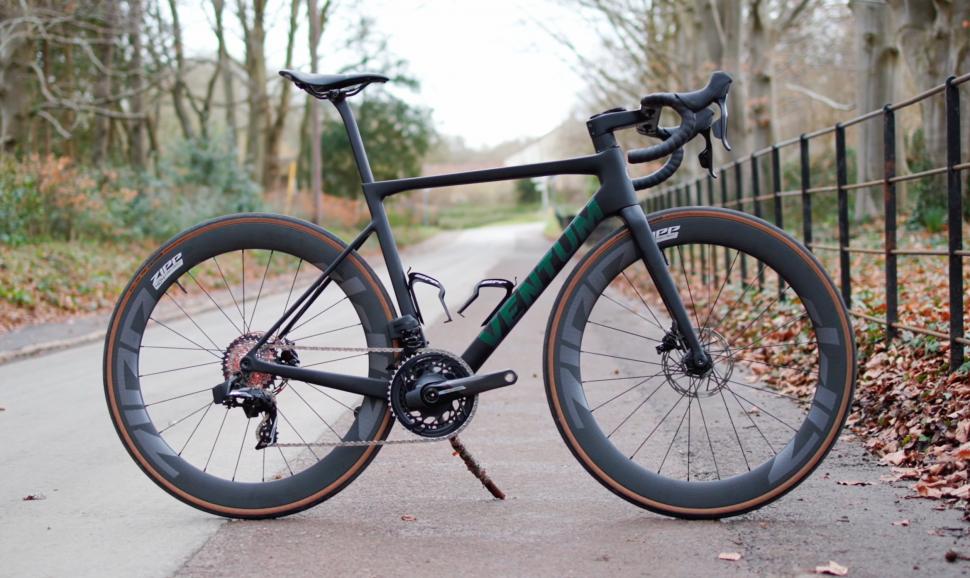
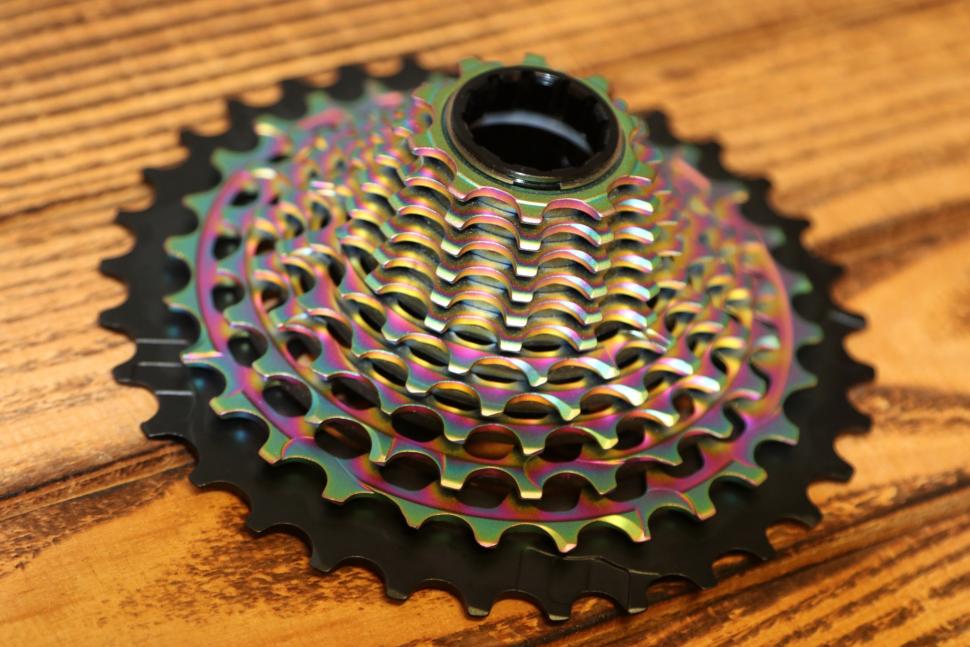

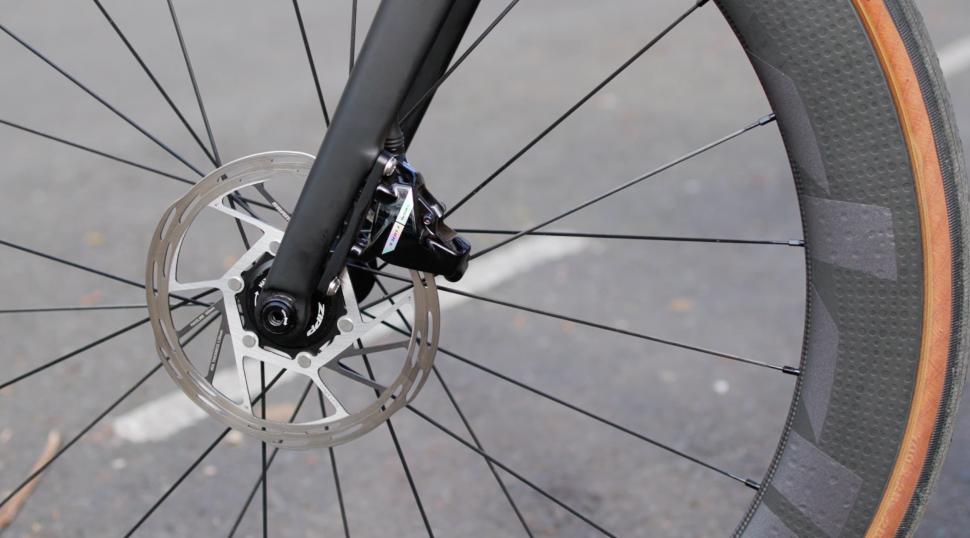
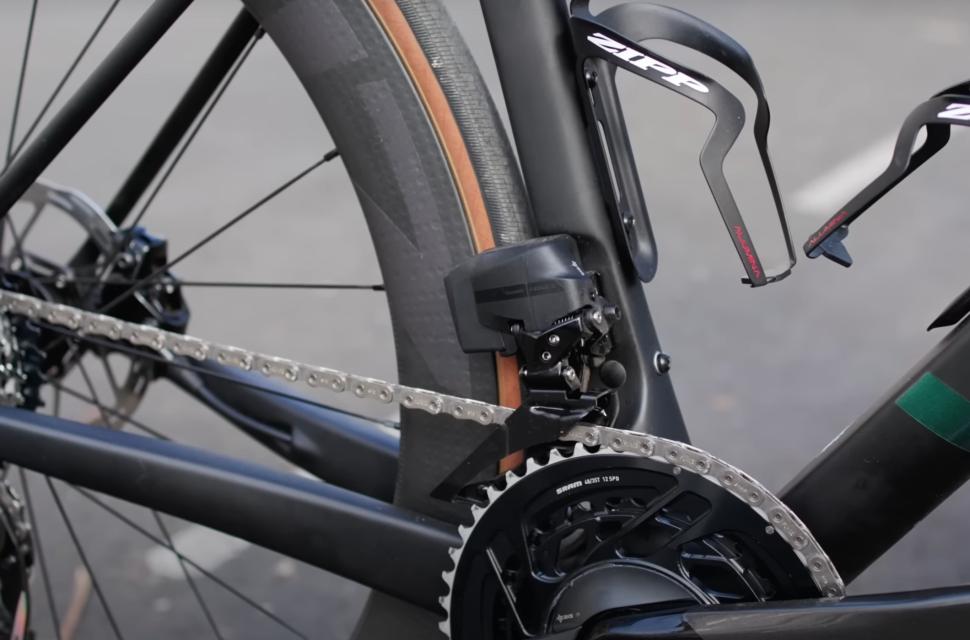
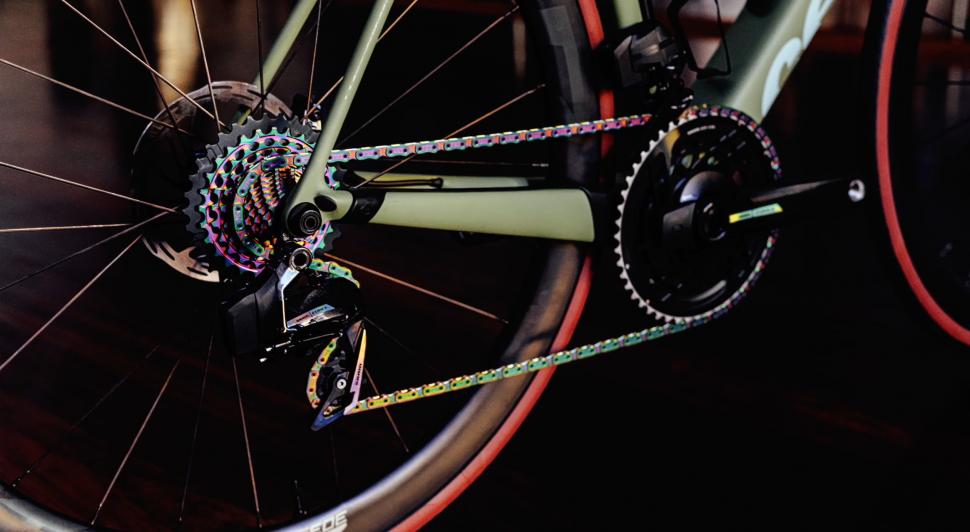



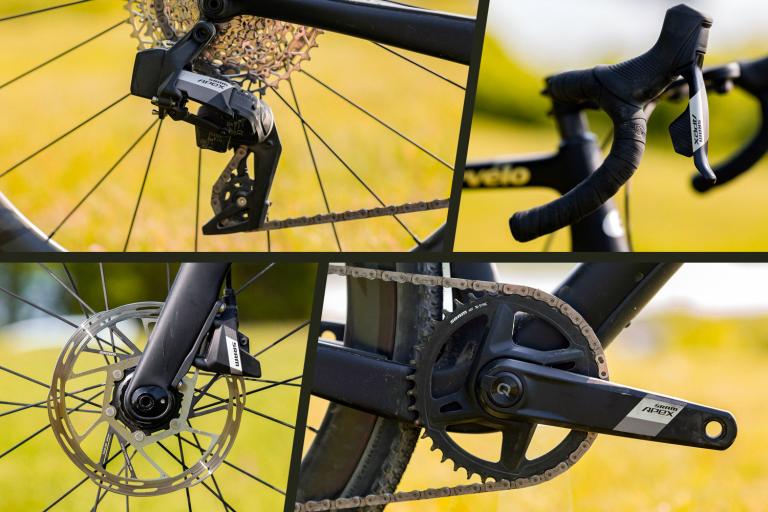
Add new comment
8 comments
Not much point buying this version of Force at the moment tbh. The new Red is about to launch, and the old Red is on heavy discount (£990 for the whole group except the chainset). This new version looks an improvement, but having had the old Force and upgraded to the current Red, there's a big aesthetic / quality difference between them.
the 10 tooth was just to create a new freehub standard and sell more wheels as the 10 tooth doesn't fit on older freehub, also patents for sram to protect aftermarket revenue. Same with the chain, needs sram chain, rings cassette all protected by patent. I run 50x13 and I've not spun out for a long time and if you do just tuck. This could easily be 50x11 50x12 less wear and less friction and less cost and more compatibility
I agree. 10t makes no sense really on a 2x set-up. I'd never use that gear, so it would just be a waste (my highest is 50x12 and that's good for me). Even if you were fast enough to use it, you'd be beter of with say 52x11in terms of efficiency
SRAM also introduced new chainring standards with AXS 12 speed. The 50/37 AXS is meant to be a direct replacement for 53/39 on an 11-up system.
The "compact" option is 46/33 which when used with a 10-33 cassette matches the ratios of a 50/34 with an 11-34 cassette - just the top gear ratios are slightly bigger. The design is intended to keep your chainline as optimal as possible so your 16 or 17 tooth (which most people use most often) is directly behind the large chainring and not offset by one sprocket, and smaller front chainrings with the wide ratio cassettes mean you use your small ring less, furthering efficiency and longevity.
Also Zero Friction Cycling did independent tests on longevity, and SRAM 12 speed Red and Force gear is the most hardwearing on the market. Even if it does give away 3-5 watts efficiency to Shimano and Campagnolo.
I haven't tried the system but I have found it intriguing. If I ever go somewhere exotic with hire bikes, I will try to see if I can get an AXS equipped bike to get a feel for it before I make my own decision on its actual value.
I admit to being a Shimano fan, I have a history that goes back to my first bike some time in the late 80s all with Shimano gropos. The key to Sram appeal is summed up by offering what real cyclists need in terms of gear ratios. I am now a 50 something with a life that gets in the way of training for hours a week just to stop my Strava times from going backward. Shimano seemed set on offering only pro ratios not gearing that I can use and just enjoy the ride, I would given the cash seriously consider Sram on a bike now over Shimano, I must getting old!
Mine is unacceptably noisy, even with my hearing aids turned right down, the 2 x 12 speed chain noise is horrific. Having run 11 speed Red eTap for several years, this is a big surprise. I also have 11 speed Di2, which is whisper quiet by comparison. Yes, the front shifting on the Force is much better (but not fool proof), but that noise means it's all going to be sold and replaced with Shimano. I think the flat top chain is part of the issue, maybe it's just too rigid, and the plstic chainset covers act a s sounding board. My LBS that fitted it does acknowledge the noise and say they do get some complaints ... but it will quiten down. I'm not convinced. I also find it all a bit plasticky and the mauch vaunted laser foil stuff a bit naff, albeit it's not as prominent in real life as the photos.
I think you're writing about the old Force. The new one has no plastic chainring parts - it's carbon. But it would be interesting to hear if it makes as much noise as you've experienced. I got a new bike recently and if the new Force had been a build option, I would have seriously considered it. As it was, only Shimano was offered and I'm more than happy with Ultegra Di2.
No I'm not, I know what I have - new Force. The 43-30 chainset has a plastic cover (it may be carbon but it certainly doesn't look like it) but the cranks are carbon. If I could work out a way of removing the cover without breaking it I would, to see if that helped.